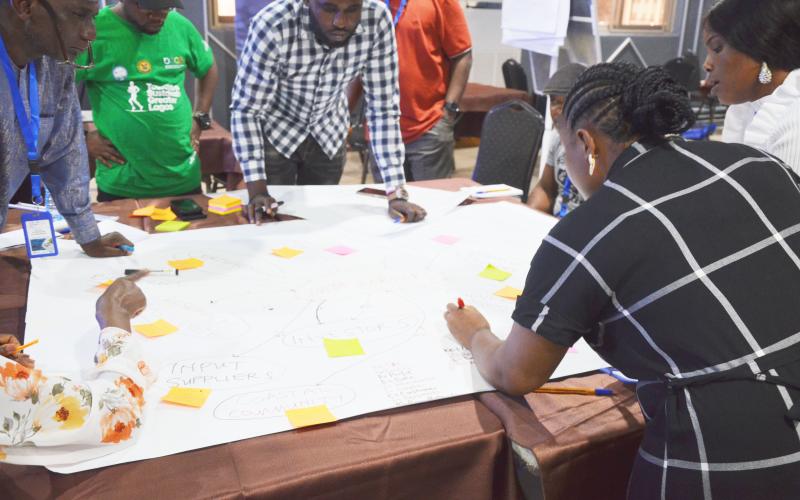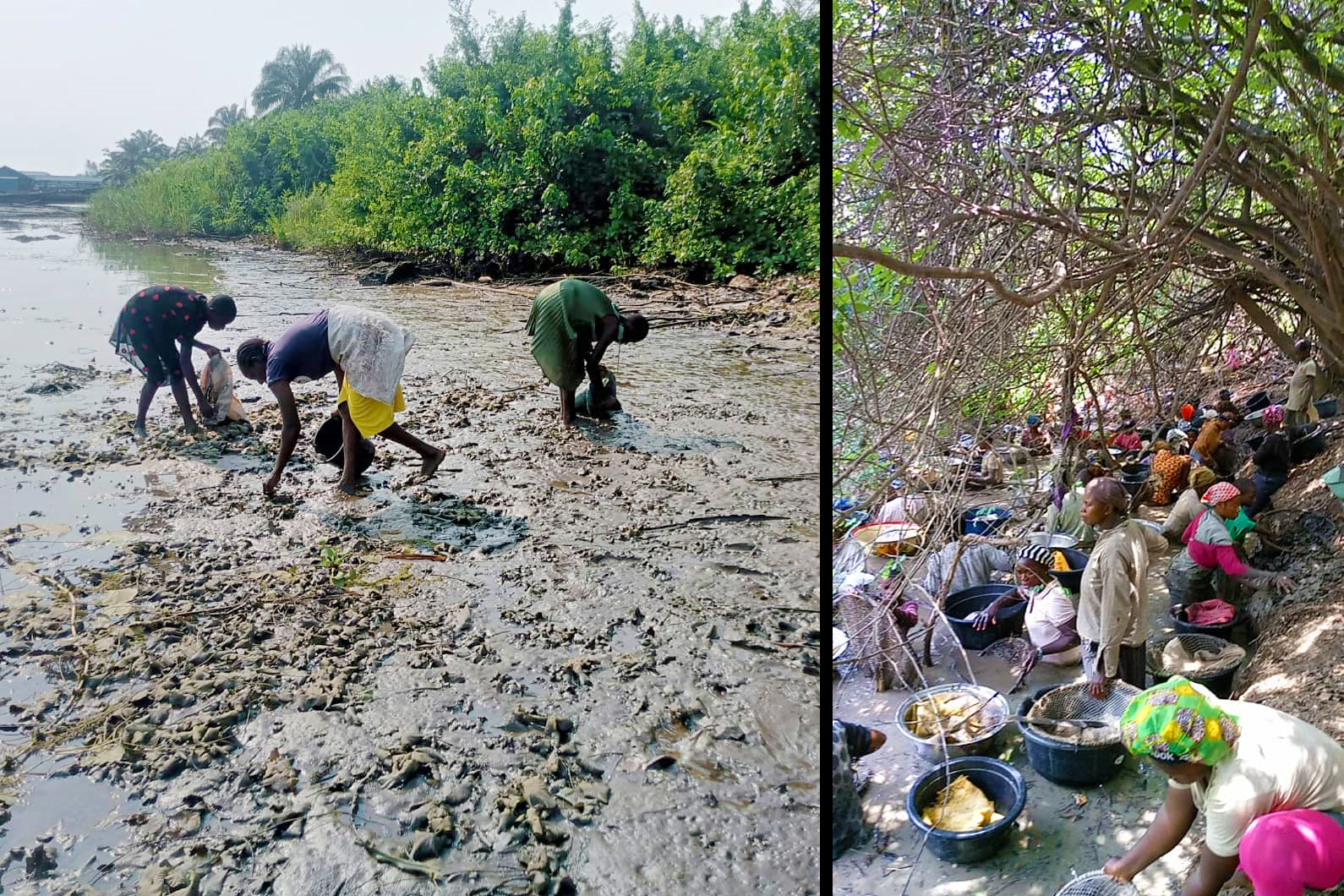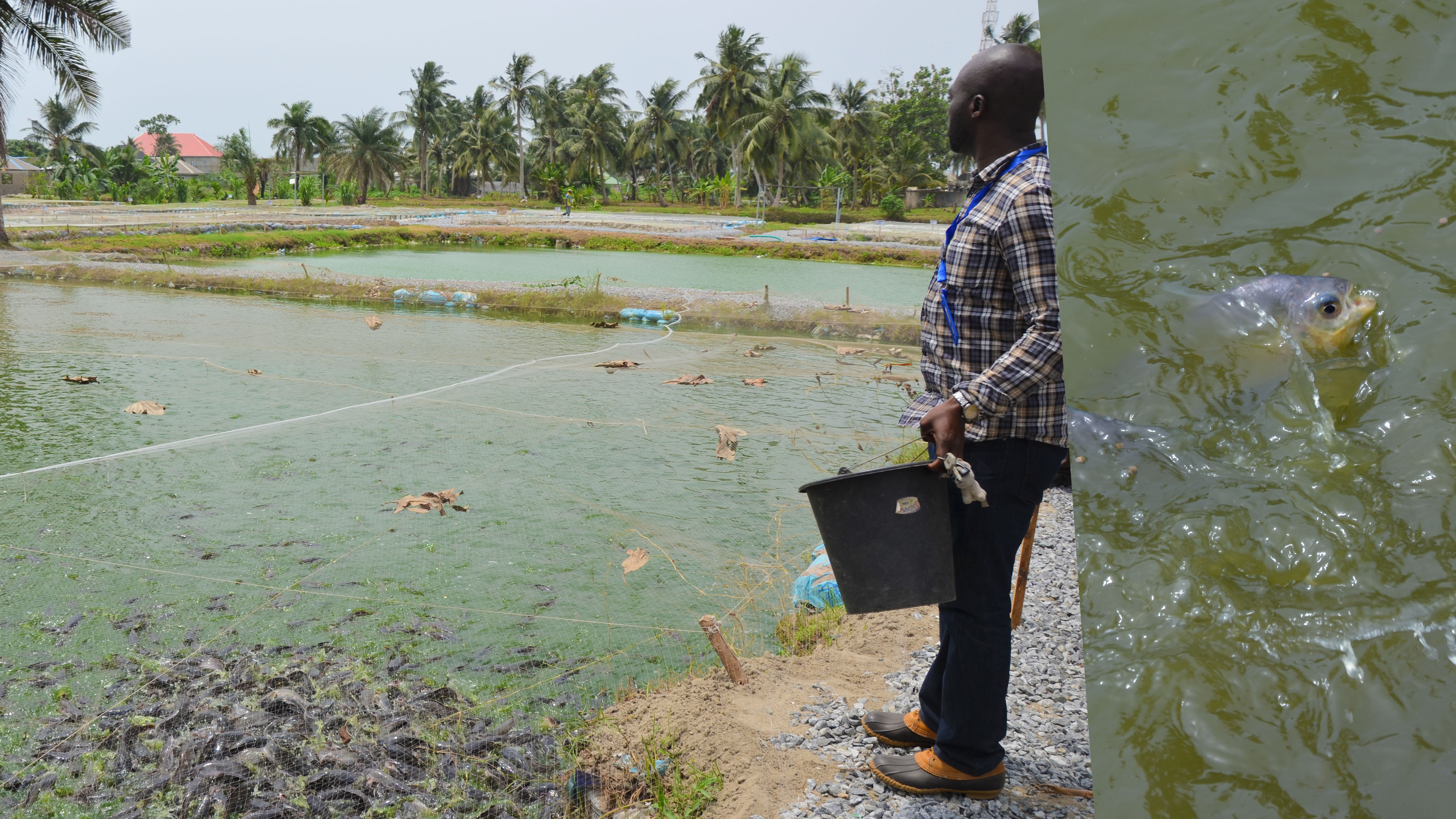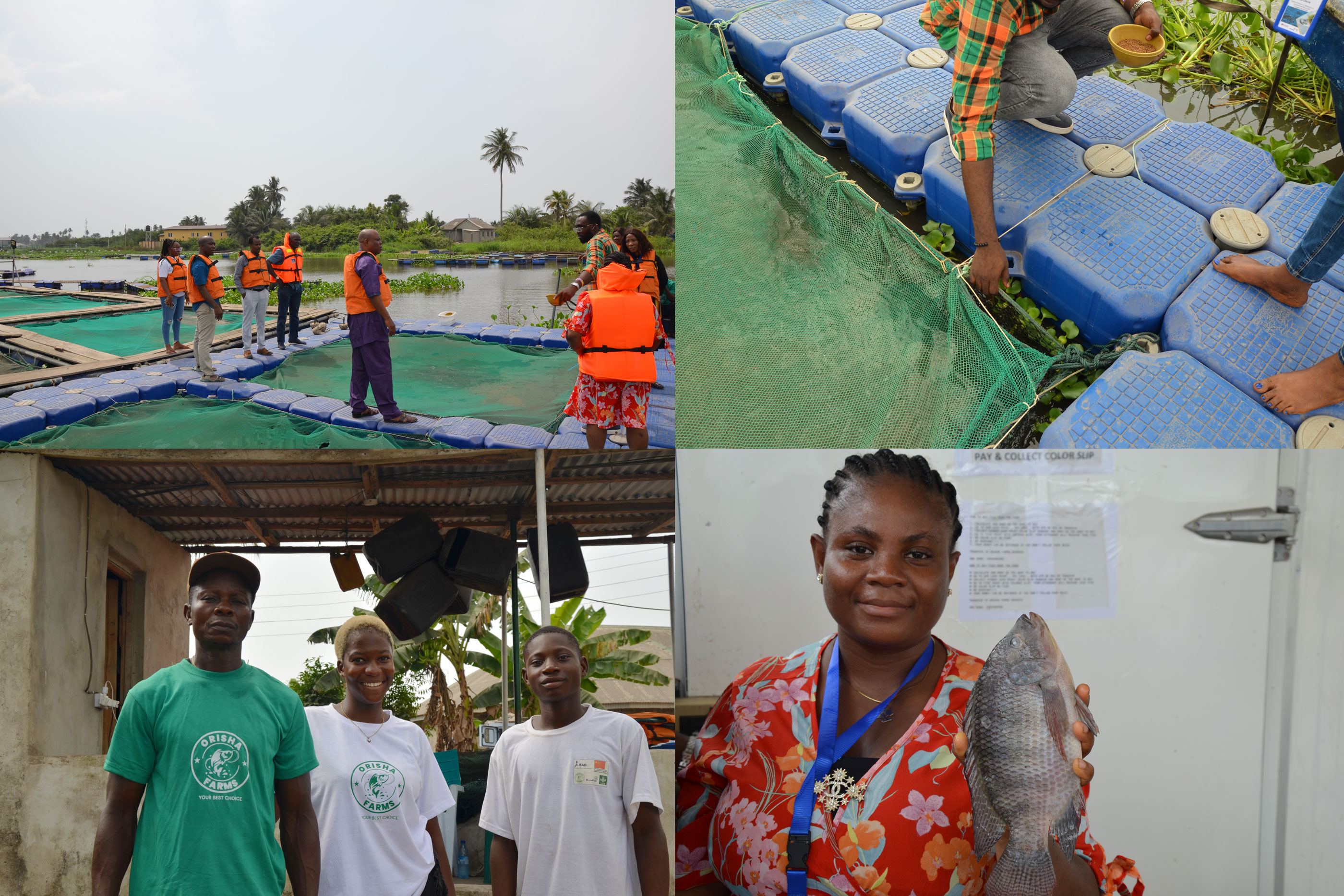
- A diverse group of stakeholders from fish farmers and coastal community leaders to research and extension gathered at the launch of the Asia–Africa BlueTech Superhighway (AABS) project in Nigeria.
- Nigeria has developed a dynamic aquaculture sector but the sector has had recent setbacks.
- The launch of AABS in Nigeria opens a pathway and hope for the coastal communities as attendees share their challenges, experiences and hear from WorldFish scientists on the potential of and a way forward with integrated multitrophic aquaculture (IMTA).
A group comprising fish farmers, private sector, research and extension, grassroots organisations, NGOs, coastal community leaders and other aquaculture stakeholders gathered at the launch of the Asia–Africa BlueTech Superhighway (AABS) project, February 12-15, 2024, in Badagry, Lagos State in Nigeria. The objective was to hear from the stakeholders of aquaculture in the community on their challenges and to discuss the potential and scope of integrated multitrophic aquaculture (IMTA), one of the four work packages of AABS, for a sustainable transformation of coastal aquaculture—in a manner that can improve both its environmental footprint and local livelihoods.
Reviving Nigeria’s aquaculture with a pinch of salt
Nigerian people love fish, which makes up over 40% of their protein intake. However, the domestic fishery and aquaculture sector cannot provide enough, costing over one billion USD a year in aquatic food imports. As coastal and inland artisanal fisheries have plateaued and are expected to remain stagnant in the years to come, Nigeria has promoted the development of aquaculture, becoming the second largest producer in Africa, behind Egypt.
“This is a poverty reduction activity that has become very important for rural livelihoods and food security, providing many jobs for the youth and women”, says Sunil Siriwardena, Worldfish, Nigeria.
The sector is dominated by the African catfish (91% of national fish farming production) grown in freshwater ponds and more recently cage farming, supporting over one million jobs. The current Nigerian aquaculture model has had recent setbacks including expensive feed, Naira currency devaluation and inflation of other inputs and equipment and competition with cheap imported frozen fish with questionable quality standards.
“The margins for fish farmers are rapidly eroding and many want to quit,” said Nurudeen Tiamiyu from the Tilapia Aquaculture Development Association (TADAN). Concerns include fierce land and water competition due to growing irrigation needs for agriculture and livestock, as well as rising drought risks hindering the development of inland aquaculture.
At the other end, the 853 km of coastline and numerous tidal lagoons represent significant untapped potential for coastal and marine aquaculture. Climate-smart aquaculture models like integrated multitrophic aquaculture (IMTA) could be what Nigerian coastal communities need to improve their livelihoods. In addition, promoting nature-positive methods like IMTA will help preserve the biodiverse ecosystems like the highly threatened and largest African mangrove expanse in the Niger delta.
Exploring potential for diversity in small-scale coastal aquaculture
IMTA associates finfish with shellfish, crabs, algae or other complementary marine culture which can feed on fish waste. This nutrient-efficient, diversified and resilient aquaculture system is already practised in Asia and promoted as means to reduce climate change impacts on the sector. AABS wants to test and scale its potential in Nigeria.
“IMTA is a quite new concept for Nigeria, but the very interactive Badagry workshop has already revealed interesting innovations on the ground like oyster farming, or young professionals trained in seaweed farming”, says Rodrigue Yossa, Director Aquatic Food Biosciences, WorldFish, who is leading the IMTA work package of AABS in Nigeria, Kenya and Bangladesh.

Glory Onun Adonase, who represents a women’s association in Cross River State, explained how the painstaking harvesting of clams, periwinkles and crustaceans in degraded mangroves provides a lifeline for the Agwagune community. They have recently dug a tidal pond trying to farm shrimp and tilapia with limited success and want to learn about more sustainable and productive ways.
Some fish farms have already demonstrated their ability to adopt new climate-smart technologies like tilapia cage farming at Orisha farms, or to experiment with new fish species.

A thirst for innovation and knowledge sharing among partners
“For four days, there has been enthusiasm to learn from each other”, added Yossa. During the visit of their tilapia cage farming system in Afowo community, near Badagry, Daniel Chukwuma, Orisha head farmer, responded to a continuous flow of questions from workshop participants about equipment sourcing, why they grow only male tilapia, assessing mortality rate and fish health care practices.

“Developing and communicating the right extension materials to promote the advantages of IMTA practices to young professionals and aquaculture actors will be critical for the impact of AABS”, explained Prof. Akintola from Lagos Agriculture State University (LASU).
Scoping of the most effective communication channels used among the aquaculture community for innovation uptake will inform the AABS knowledge sharing strategy.
“Small farmers, youth and women groups are usually mobilised through clusters and cooperatives”, explained Marcus Adeniyi from IDIPR, an NGO implementing youth employment programmes through cooperative models.
Working with existing socially inclusive networks will ensure that AABS tailors innovations to actors working at even the smallest scale. Fish farmer-based associations, such as TADAN and the catfish equivalent CAFAN could be effective platforms for training and knowledge transfer. Private sector-led development is another way to go, as underlined in a recent CGIAR Aquatic Foods Initiative aquaculture policy forum. For instance, Premium Aquaculture Ltd., a leading tilapia breeder, producer and processor in Nigeria, which received the first batch of the Genetically Improved Farmed Tilapia (GIFT) from WorldFish Malaysia, has been a training hub for small-scale farms like Orisha farms and farm managers stay in touch via WhatsApp. Premium Aquaculture Ltd advised Chukwuma after the first year of operation to halve fish stock density which resulted in a very good survival rate.
In some areas, existing extension networks like the innovation platforms and adopted villages and schools managed by Agriculture Research Council of Nigeria’s institutes may help to spread the results of IMTA pilots and guide IMTA early adopters. Nigerian fish farmers are also keen users of online media like Voice of Farmers agricultural media start up.
Innovation transfer is always a challenge, but the creativity and enthusiasm of Nigerian partners is a promising start to imagine a sustainable aquaculture future through adoption of IMTA’s concept. AABS’ vision in Nigeria will promote a more integrated coastal resources management that works for both the vulnerable coastal communities and the fragile blue carbon ecosystems.
